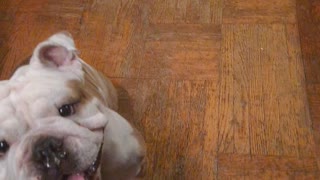Premium Only Content

3 density tricks
Three simple, clear tricks to understand density!
Equipment: shot glasses, tinted hot water, tinted cold water, colorless cold water, vegetable oil, soap foam, sheets of paper.
Fill one shot glass with tinted hot water, and a second with tinted cold water. Cover the shot glass with hot water with a piece of paper. Quickly invert the shot glass and carefully place it atop the shot glass with cold water. Remove the paper barrier. The liquids won't mix! If you repeat this experiment with the cold water on top, the liquids will mix and the solution will become homogeneous.
- Try the experiment again with tinted water and vegetable oil. Cover the shot glass full of water with a piece of paper and invert it over the shot glass full of oil. Remove the paper and watch as the liquids change places: the water sinks, the oil rises.
- Fill one shot glass with tinted water, and the other with soap foam. Cover the shot glass full of water with a piece of paper and invert it over the shot glass with soap foam. Remove the paper and observe as they change places: the water sinks, and the foam rises.
The uniting factor between all three tricks is a difference in density. Density is a physical quantity expressed by the ratio of body weight to the volume it occupies. The first demonstration involves the same liquid (water) at differing temperatures. As hot water is less dense than cold water, the liquids don’t mix even when there is no barrier between them. The dye will diffuse rather slowly into the second glass of water, but that’s all. However, if these liquids are inverted, they mix as the less dense liquid rises to the top. The second variation on this experiment demonstrates that oil is less dense than water. The molecular characteristics of oil and water prevent them from mixing, so the oil freely passes through the layer of water and rises to the surface. The third variation involves a process similar to that of the second. Soap foam consists of gas bubbles surrounded by a thin shell of a soap solution. The air that is in its composition is less dense than water, and therefore water displaces it at the bottom of the structure.
Safety precautions: none
-
 1:23
1:23
NepalayaTech
3 years agoWhatsApp Tricks
58 -
 0:08
0:08
TheZeppelin
3 years ago $0.01 earnedOdin Dog Tricks 2
391 -
 0:34
0:34
BikerKash
3 years agoBiker Kash tricks
31 -
 0:07
0:07
Buckshotdgs
3 years agoSkateboarding tricks
130 -
 1:28
1:28
FatherRosadoTV.com
3 years agoBully Breed Tricks
70 -
 0:17
0:17
johnAgw
3 years agoPuppy tricks
23 -
 0:53
0:53
Sg666
3 years agoLucy &Addie tricks
83 -
 1:54
1:54
Helmet Cam Ride Alongs
3 years ago $0.02 earnedDemocrat's Old Tricks - Buddy's Helmet Cam
64 -
 0:52
0:52
kucheesabeeshee
3 years agoSlow motion Hibachi tricks
52 -
 4:30
4:30
RC Zone
3 years agoFT Spitfire - Tricks
67